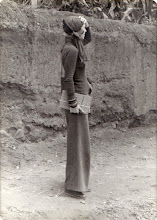“A prominent futurist has said that forecasting isn’t a means of predicting the future, but rather an effort to discover what you need to do now to help shape the future. We think Museums & Society 2034 will help museums make a better future for themselves and society,” pronounced Elizabeth Merritt, founding director of CFM in the press release for the Association of American Museum's May 2009 conference in Los Angeles. Concerned with the new interconnected reality of the young 20th century, AAM is asking whether "We can be a community of museums without borders," citing the technological advances of Internet 2.0, the hopes for more porous boundaries between international museum professionals, and the motivation to cater to a global audience sharing new access and shared concerns (environmental, local, communal). Sharing business models, streamlining operational models, catering to the "new meanings of diversity", the AAM's concrete goals for the museum are indeed "mindful" of its position as an important actor in the processes of social reproduction, setting the stage for creativity and living in the future. But are they really without borders? Even bringing in new audiences, the art world and especially its institutions are nonetheless inherently hermetic. Connectedness doesn't erase the boundary between the outside and inside of the museum window, whether it's through the computer screen, at international festivals and fairs, or in the boardrooms. It seems, rather than breaking boundaries, the new museum is changing scales. From the local to the global, technology has widened its purview, but the excluded remain those in underdeveloped countries, those objects of anthropological exhibitions rather than generators of the next great operational model. Boundaries remain between subject and omniscient shapers of the social fabric. But the AAM is right - "Museums are positioned to be among society’s most active participants in this new interconnected world. We represent history, culture and knowledge and are trusted sources of relevant, valuable information. We are dynamic manifestations of societal views and communities. Museums can be the connectors and bridge-builders, helping visitors of all ages, backgrounds, nationalities and locations
better understand one another." If we assume this to be true, than the museum has the ability, nay, the responsibility to do more than change scales from local to communal to urban to regional to national to international to global. It's in the last jump, from international to truly global, where lie the greatest challenges. How to go beyond the network of technology nodes, knowledge centers, urban captive audiences to truly reflect a global audience? How to avoid the erasure of those parts of the world community that are just as concerned with health, education, history, culture and representation, yet without the safe lilypads of museums to alight on from New York, London, Berlin, Paris, Shanghai, etc?

